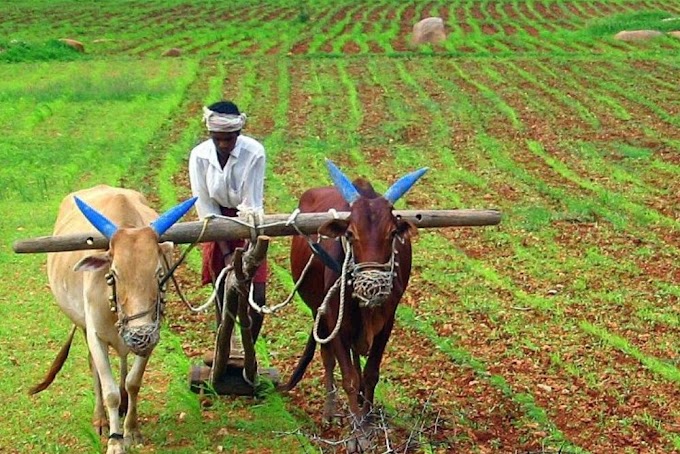Indian agriculture and peasant states in the pre-independence era
Indian agriculture before independence At present, the Indian economy is growing at a steady pace which is better than the economic conditions of some other developing countries.
The agricultural sector alone contributes about 15–18% of the country's GDP.

But as we can all imagine, this was not back in the old days when the British ruled the country before we got our independence in 1947.
The pre-independence Indian economy was plagued with many bad seeds, which we will discuss in detail in this article.
all Indian agriculture before independence
The Indian economy consisted of five sectors before independence, the agricultural sector, the industrial sector, foreign trade, infrastructure, and the country's population profile.
Agricultural sector before independence
The pre-independence Indian agricultural sector mainly exhibited three characteristics, ending the backwardness and stagnation of the economy.
1. Low Productivity
Productivity is measured or counted based on the area of cultivated land and the amount of crop produced.
Just before independence, the level of productivity was dangerously low to the point that it could be called backward.
This meant that in spite of sowing large tracts of land or fields in every season, production was very low.
If we compare the productivity figures of 1947 to those of 2008 and 2009, as shown in the table below, we find that rice productivity was about 20 times lower in 1947 than in 2008 productivity.
For wheat, productivity was four times lower in 1947 than in 2008.
Similarly, if we compare the productivity data of rice and wheat from 1947 to 2009, we find that the productivity of rice was seven times lower in 1947 than in 2009 and the productivity of wheat was twelve times less than in 2009.
2. High level of risk and volatility
The agricultural sector in pre-independence India was very turbulent and highly volatile.
In other words, there was no stable production rate for different crops.
The main reason for this was improper infrastructure for perennial irrigation.
Due to the lack of a proper and efficient canal network, farmers mainly depended on rain for irrigation of their fields.
At a time when rainfall was good and abundant, production was favorable and vice versa, if there was less rainfall, production would fall drastically.
No efforts were made by the British rulers to ensure permanent methods for irrigation in the form of wells or canals.
3. Tension between landlords and soil tillers
During British rule, the main feature of Indian agriculture was uneven quarrels between tillers and landlords.
The tillers were those who actually worked on the farms while the zamindars were the people who owned those farms.
In a case where the owner of the land was the actual farmer, it was very rare to work in that area.
Zamindars were never concerned about the happiness and comfort of the workers as they were more concerned with maximizing their profits.
Nearly all the zamindars had leased their 'owned land' to the tenants.
Tiller then worked on those lands and grew the crop.
Zamindars took all the production from the land and only gave the tillers a substantial share of the total production to survive.
Due to such a large imbalance of wealth between the factions, the obvious result was a steady and deteriorating economic condition of the country.
Factors that cause stagnation of India agriculture
Now that we know the conditions of the agricultural sector in pre-independence times, we will now look at the causes and factors that led to this situation. There are mainly two factors that led to the backwardness of the agricultural sector.
1. Land Revenue System
When the British ruled our country, it invented a unique system of land revenue.
It was a triangular relationship between tillers, landlords, and the British government.
This system was known as the Zamindari system.
As we discussed earlier, zamindars were appointed and recognized as the owners of the land.
These landlords had to pay a certain amount of revenue or tax to the British government.
This revenue was known as land revenue. Now, these owners were free to take more work and production from tillers as they wished.also read the importance of agriculture in India
The tiller was completely suppressed and even with basic necessities not given enough to survive.
The main result of this system was that the zamindars often fired tillers to increase their profits as production would be the bulk of the crop after them.
Due to this fear of losing their livelihood, there was no interest in agriculture.
It had become simply labor, tillers were forced to live as long as they wanted to survive. Indian agriculture during British rule read this








